N 40°06'19.0"
E 22°30'10.5"
Litochoro is attached to the edge of the cliff. The Enipeas Gorge, which is cutting the Olympus massif in half, falls almost vertically next to the last houses in the city. It is true that the buildings with taverns are even at the bottom of the gorge, but no one lives there permanently.
I wrote the following text almost three years ago, in April 2020, after a few months of my life in Litochoro. I am posting it below as a document of the times, primarily as proof of my fascination with a new place, which is always very strong at the beginning and therefore it is worth perpetuating it. The text is seemingly about Litochoro, but in fact it says much more about my feelings than about the city and it should rather be read that way.
Zvara
About music, dance, Zagori Races and cosmic religion of Greece

READ MORE
town like strawberry cake
Litochoro also has an amazingly unique layout. The main street, rising gently upwards, is located completely on the side, and the rest is a labyrinth of nooks and streets, that even Google Maps can’t cope with. The city has the shape of a very elongated rectangle and although it looks like a flat strawberry cake from above, from the perspective of a resident or a leisurely wanderer, it is clearly divided into two parts: the lower, to the roundabout with a fountain, at the end of the main street and the upper part rising up in terraces, a bit older. The expression “upper part” may, however, surprise the residents of more flat areas, when the shortest way I go for a walk to the forest, I easily do over 120 m elevation within the city!

between the mountains and the sea
Phaistos Disk

READ MORE
massif of Olympus
Olympus is the main sense of the city’s existence, although this has not always been the case, and the Maritime Museum located on the main street is the best proof of this. To have some idea of the scale of the mountain of the gods, it is better to think about the massif of Olympus rather than of a single mountain. Comparison to the highest mountains of Poland and Slovakia can be usefull. The asphalt road around the Tatras is about 230 km, the analogous road around Olympus is at least 160 km, while Olympus – unlike the Tatra Mountains surrounded by wide valleys – quite smoothly changes into the massif of Lower Olympus in the south and the Pieria Mountains in the north.
55 peaks and moving rocks

Secret Life of Cicada
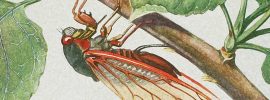
READ MORE
forests and open areas
Muses Plateau, Mytikas and Stefani are, however, the purpose of a longer, all day trip. Olympus in the Litochoro area is primarily wooded. It is a very diverse forest, rich in species of both deciduous and coniferous trees, with an unusual for Greece amount of moisture, and what is especially important from my perspective, a forest that gives shadow and offers quite a lot of beautiful and quite comfortable running paths. I can easily find routes for short, fast trainings (loop to Stavros Rf. or to Gkolna glade, each about 10 km long and 700 m high), medium routes of the type 20 km + and about 1500 m up (trip to the old monastery, on both slopes of the Enipeas Gorge) and serious, all-day running expeditions (cross the entire massif from Kokkinopilos to Litochoro, i.e. from west to east, is about 40 km and +3000 m). And all this (almost) only in the forest zone to a height of 1000-1300 m a.s.l. in the nearest vicinity of Litochoro. Around the whole massif there are at least several villages – Dion, Vrontou, Petra, Kokkinopilos, Karya – which can be a starting point for the Mountain and each offers its own, slightly different, “piece” of Olympus. In general, the northern and eastern slopes are much more forested than the southern and western ones. On the south side it is also slightly warmer, and on the west slightly cooler (than in the east).

summer and winter

Seal Of Pylos
Forgotten Masterpiece
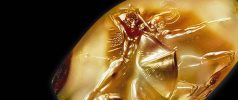
READ MORE
my picture of the City
Peloponnese
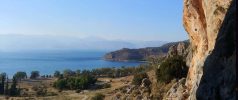
READ MORE
I am delighted with the changes of the seasons, flowers in January, trees with evergreen leaves, hundreds of salamanders on the path to the hermit cave, new houses two streets around the corner, the possibility to play basketball outside the school at the beginning of February, local customs, new people I meet every now and then , new words and extraordinary melody of the Greek language that I hear every day.
From this perspective, it is very easy to see that Litochoro is completely differently organized than similar places in Poland. More friendly to life, open to people and their needs, conducive to meetings and conversation. There are countless taverns and cafes in the city. Only on the main street I counted over 20! In a quite large (although half the size of Litochoro) tourist village in southern Poland, where I once organized running competitions, there is only… one restaurant (equivalent of a Greek tavern). There are no cafes at all!
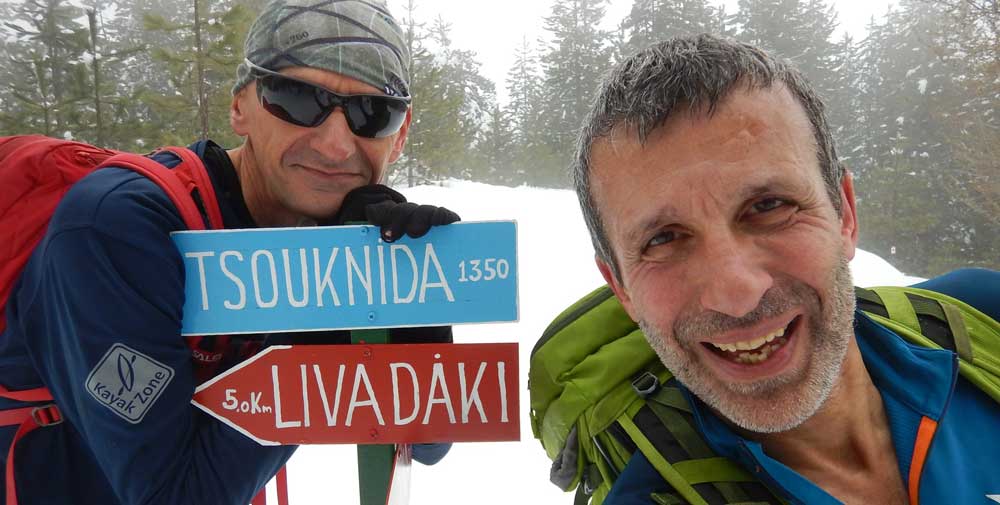
social places in Litochoro
Litochoro also has an amazingly large number of public places. A sports stadium is absolutely sensational, with a football field of course, but also with a real 8-track athletics track, long jump place, high jump and pole vault places. With an obstacle ditch and additional football field. And with a wonderful view around, because on one side I have the peaks of Olympus, and on the other Aegean Sea. There is no such stadium not only in cities of similar size in Poland, but probably in many cities in much richer Europe.
There are many more similar socially active places in the city. In the very center is the City Park, with several alleys, a pond and a large fountain, amphitheater and a bit more wild part. What happens in this park on warm summer evenings (in Poland it would be late at night, because in the country on the Vistula River people as we know go to sleep with chickens) passes my imagination: the old sit on benches and talk, young people walk somewhere in the alleys, children ride bikes, buzz, constant movement, friendly, open atmosphere – a real human hive. At first I was wondering – and where are the dressing suit’s, which hanging out constantly in front of my block in Warsaw, maybe there is no hoodies here and wearing it isn’t obligatory? Where are these meneles, drinking some liquids every day in front of the store in my neighborhood – ran out of cheap wine? Now I stopped thinking – maybe this is the real world, and that’s how people live, and what I had before was some kind of matrix.
It’s still not all. There are many more smaller public parks in Litochoro. Such squares with alleys, trees and benches, squeezed somewhere between the houses, so that the local residents did not have to go downstairs, and the children had somewhere to play with their peers. I don’t even ask myself why these children are outside all the time, they have so much movement, they probably haven’t invented computer games here yet.

meetings - the taste of life
Meetings are a different reality in Litochoro. Of course, taverns and cafes are places by definition intended for meetings. Because dinner in a tavern is not just food, it’s feasting, which often consists of a dozen or so dishes, lasts several hours and I always get the impression that its main purpose is not filling the belly, but meeting and talking. Not only with the other friends. One time we sat down at the table and started to talk. A man from the next table cut in on the conversation and Lazaros talked to him for… 15 min (!) – Is that your friend? I asked. No, just man. I still can’t get over it.
But not only that. I live in Litochoro for only a few months, but every time I move somewhere I meet friends. Not some great friends, but just people I know. And I know someone in Litochoro, because I did shopping in his store twice. And such a man recognizes me from a distance, shouting Hello and asking „how are you today?” And if he accidentally meets me in a cafe, he gives me coffee or beer. People meet here constantly. And nothing can stop such
a meeting: the main crossroad of the city, two cars stop in the middle, because the owners have to exchange a few words. And others wait calmly, because they understand that nothing is more important than meeting two people.
now abandon and in ruins like many buildings in Litochoro.
Maleas to Astros
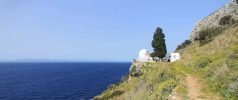
READ MORE
houses and gardens
I wonder if this obviousness and everyday meeting, openness of people to others is not even manifested in architecture. After all, the most important element of every home in Litochoro is … a terrace. A balcony, veranda, loggia, or some other place outside where there is a table and chairs. Houses in the city are very different, but this element is in everyone, in countless implementations. Sometimes such a place is located on the roof, because above there is a greater chance of air movement during the summer heat. Life in Litochoro goes primarily outside, and homes isolate man from the outside world to a much lesser extent. They do not have intermediate spaces, corridors, hallways or vestibules, very often you enter directly into the room or kitchen.
Litochoro architecture does not enchant you at first sight. The city does not look like Paleo Panteleimonas or villages in Zagori that could do as an open-air museum. It is certainly a vibrant town, rich with inventiveness of residents, their various needs and changeable taste. However, all houses in the city have red tile roofs. Not most of them – all of them! This creates a style and urbanistic unity. From above, the city really looks like a strawberry pie, the phrase at the beginning of the text was not a floral metaphor. Nevertheless, the houses are very different. Some retain the features of a traditional style, i.e. stone walls with decorative wooden slats, arranged in semi random places; although the presence of these elements does not necessarily means that the building is old, because many new houses are also built this way. There are white plastered houses in Litochoro, there are quite a few blocks of flats, although they do not resemble those in Ursynów, they are much smaller and so integrated into the urban environment that it is difficult to recognize them. All these houses have one feature: they are incredibly fragmented, they have countless elements of different heights, outbuildings, roofs and eaves. The eyesight has something to catch on and with constant pleasure I wander sometimes on narrow alleys, discovering new pearls.
Home gardens are a separate topic. The inventiveness and aesthetic sense of residents is best manifested in these ephemeral elements that require constant care. The gardens are small, but all the vegetation just explodes from them, with lots of flowers, trees and bushes, exotic to me. Sometimes pots of various sizes are dominant, as if casually arranged, and some are like a reminiscent of pitos from the Palace of Minos in Knossos.

tourism in Litochoro
The Path of Your Dreams
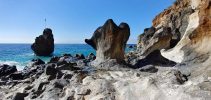
READ MORE
best place for exploration
In this way I come to a crucial moment in an attempt to explain what I am doing here and why Litochoro stole my heart. The most important feature of every trip, every change of whereabouts all the more, is the opportunity to learn new things. It is not just that there are objectively more of these new things around us than at home, more importantly that our sense of perception shifts to reception mode, becomes more open to newness, more sensitive, and sometimes even more greedy and seeking. Hungry for impressions and new discoveries. Can there be a better place to explore than Greece? Theoretically, I live here like everywhere, between home, coffee bar, mountains for training and other places of daily activity. But, after all, I am so excited that Orpheus was born 4 km north of the city (of course, I went to see where it was), Alexander the Great set off to conquer the world from the palace, which is located only 30 km away, and the viper bitten Eurydice in the Tempe Valley, which is two hours away by bike from Litochoro. I live in a world of my dreams, only now I can go and see what this world really looks like. And it seems, such a confrontation is only good for it.

and most beautiful hiking trail in the area. Some climbing skills are needed.
Lost Trail
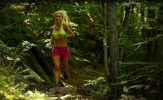
READ MORE
lost trails all around
But it is not only the distant antiques that move my imagination. In Litochoro there are a lot of different remains: abandoned or unfinished houses, empty commercial premises, strange constructions, the sens and meaning of which is not clear anymore, there are even closed taverns and hotels. It all proves the former splendor. Even more about the splendor of plans and great investment optimism of the residents, but still about the fact that the past was full of hope. It is similar with the paths in the mountains. The main tourist trail E-4 through the Enipeas Gorge, built in the second half of the 80s of the previous century, 30 years ago provided much easier access deeper into the mountains than now, when it is so damaged that it resembles a natural path. Even worse (i.e. better) is with all other routes in the massif. I used to think that there are very few paths on Olympus, now I know there are plenty of them! Of course, most of them are not visible because they were shepherd’s paths, and more than 40 years ago, sheeps and goats disappeared from Olympus, and the tourist traffic was too small to sustain their existence. You can’t see them, but they are there. They are waiting patiently for rediscovery. Isn’t that a beautiful challenge? Many times checking the next variants of barely visible trails that disappear suddenly in the middle of the forest or above the cliff, I felt like the first tourists haunting the Polish mountains at the end of the 19th century or pioneers of the American West a little earlier. Only me and wild nature. With the only difference that in Greece it is never entirely clear whether it is primordial savagery or in the time of Pericles or Constantine the Great this world was full of human traces, and only now it has gone wild again.
Anyway, living in a place where I can play the role of a discoverer and seeker of ancient traces constantly excites me a lot.
For now I will stay here.
Litochoro – Lakkos, April 2020
MORE POSTS ABOUT OLYMPUS
My 55 Peaks
Olympus Mythical Trail
Goumarostali Vertical Mile
From Prionia to Muses Plateau








